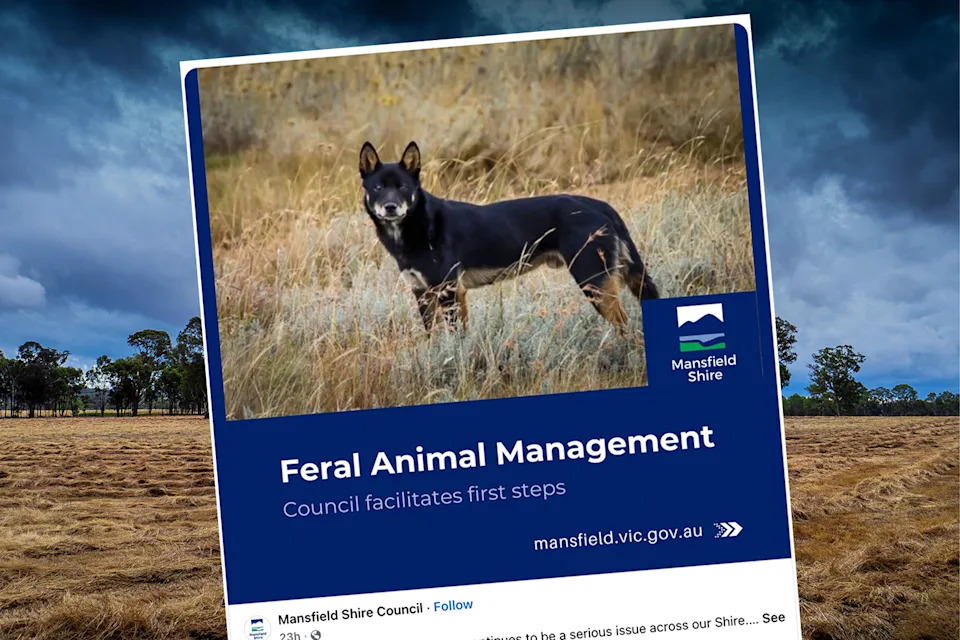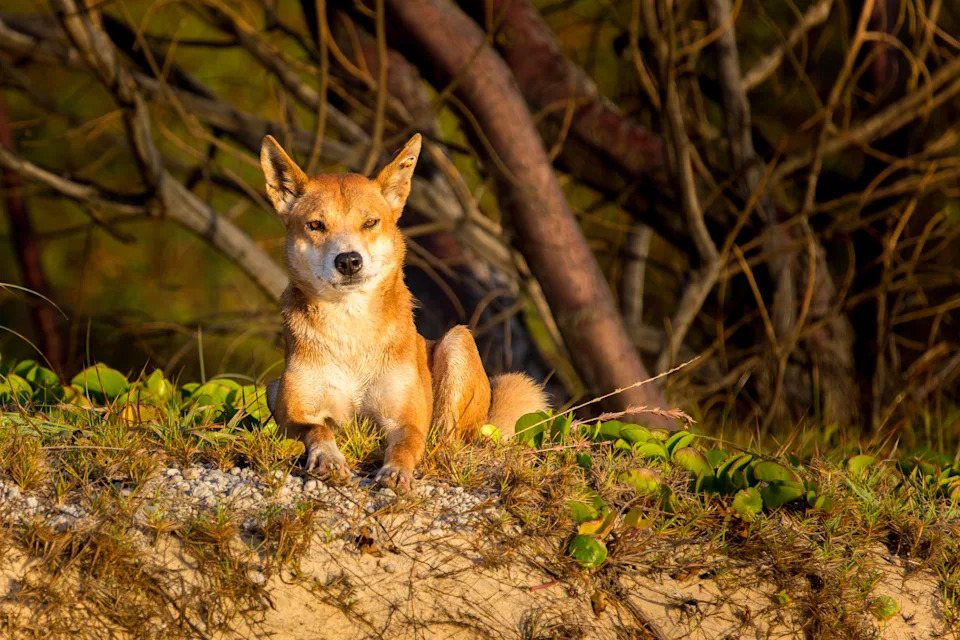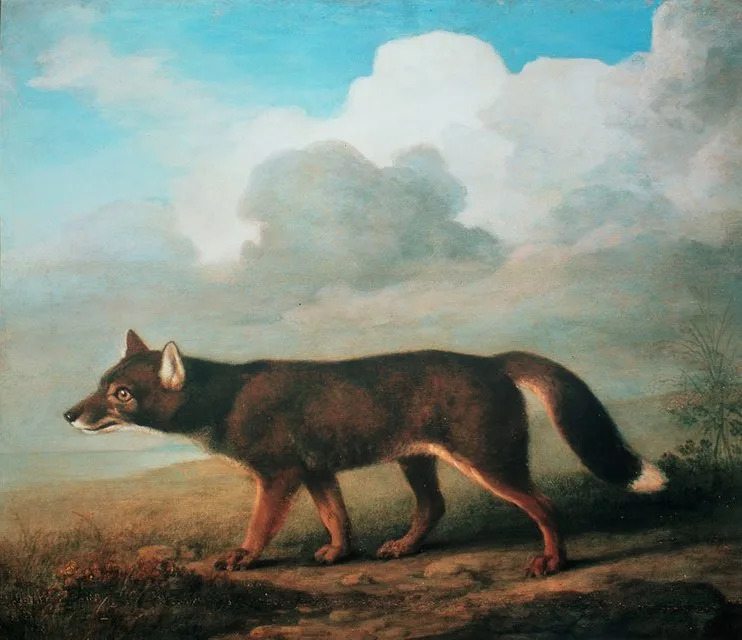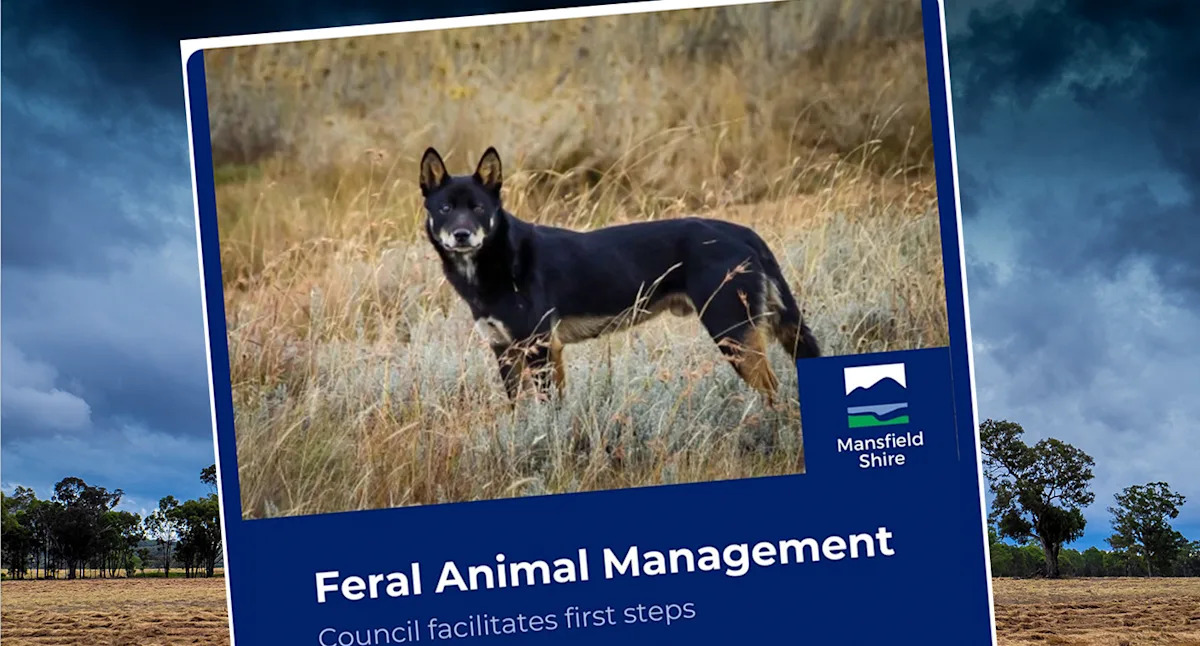An Australian council has removed a stunning image showing a black dingo from its website and social media pages, following its controversial use. The decision follows a series of questions from Yahoo News Australia, many of which it has refused to answer.
The picture attracted nothing but praise when it was originally published in March, 2021 by another organisation, the University of NSW. It accompanied an article about DNA tests demonstrating that most animals described as “wild dogs” in Australia are actually pure native dingoes. “‘Wild dogs’ isn’t a scientific term — it’s a euphemism,” the researcher Dr Kylie Cairns said at the time.
But in September 2025, Mansfield Shire in Victoria chose to use this same image in a very different context. It pasted the dingo above an announcement that it was working with farmers to manage the “problem of feral animals” in Victoria. Many dingo advocates are concerned that it perpetuates a myth that black-coloured dingoes don’t have pure genetics and have interbred with modern domestic dogs, and that it could suggest dingoes aren’t native.
The photographer Ian Brown isn’t impressed. He snapped the picture at the northern end of Kosciuszko National Park in NSW to highlight the beauty of the animal.
“You see less and less dingoes up the mountain, and so seeing one these days is an absolute thrill and a blessing,” he told Yahoo News.
Related: 🚨 Warning controversial act could be ‘diabolical’ for survival of dingoes

Mansfield Shire attached an image of a native dingo to its feral animal management plan. Source: Getty/Mansfield Shire/Michelle and Ian Brown Photographer
Brown claims Mansfield Shire did not approach him about using his picture, despite his social media pages, which he runs with his partner, Michelle J Photography and Equine, having a stern copyright warning that using images without permission is “strictly prohibited”.
“It would have been nice if they’d asked, but they wouldn’t have got permission. We only let pro-dingo people use our images. So it’s frustrating and I’m not happy about it,” he said.
When asked about its decision to use the dingo picture, Mansfield Shire told Yahoo it had decided not to provide a response.
Council told ‘dogs’ having a devastating impact on farmers
Yahoo understands through earlier communication from the council that the community had reported increased incidents involving dogs, cats and foxes over a sustained period. And that the attacks were having a financial and emotional impact on farmers.
Reports of dingoes or “wild dogs” killing livestock are not uncommon in Australia, although advocates maintain they prefer to eat kangaroos and other native wildlife as they struggle to digest fattier sheep.
Working with landholders, both state and local governments have worked to eradicate dingoes outside of central areas within national parks through trapping, poisoning and shooting.
In the ACT, few animals remain, and the government is considering no longer managing them as a pest, and in Victoria, the species has been listed as vulnerable to extinction.
Some experts are concerned the dwindling numbers will lead to genetic bottlenecks, or even worse, lead them to actually start breeding with domestic dogs to avoid extinction.

Many Australians falsely believe that all pure-bred dingoes are tan in colour. Source: Getty
Melinda Browning, a director of advocacy group the Australian Dingo Foundation, concedes that stock losses around Mansfield are higher than average across Victoria, but data she has collected indicates they are still low. And she believes the council’s apparent concerns around dingoes have been sparked by “wild claims” about dingo numbers “going ballistic”, despite there being evidence of substantial declines over a decade.
“There’s a lot of misleading information about them being ‘wild dogs’, they’re not, they’re dingoes. There seems to be this attitude of, if we see a dingo, we’re going to kill it, whether there are stock losses or not,” she told Yahoo.
Common mistake about the black hybrid dingo
What concerns Browning in particular about the image used by Mansfield Shire is that she believes it perpetuates a myth that dingoes that aren’t tan in colour are hybrids.
“The new scientific evidence is irrefutable. One of the first dingoes depicted [by Europeans] after Captain Cook landed was black and tan,” she said in reference to the 1772 image by British artist George Stubbs.

Artist George Stubbs was the first European artist known to have painted a dingo. It’s held in the collection of the National Maritime Museum in Greenwich, London. Source: Public domain
DNA testing by both UNSW and Melbourne University has found no evidence that multicoloured animals are somehow less pure.
In 2024, the University of Melbourne’s Dr Andrew Weeks said it was unfortunate that past research claimed to have found evidence that “dingo-dog hybrids” were common, and this had been used to defend culling, particularly in Victoria.
“Other studies and now our new genetic research show dingoes are not breeding with domestic dogs in the wild. Rather, they are maintaining their independence as a unique evolutionary branch,” he wrote in The Conversation.
Love Australia’s weird and wonderful environment? 🐊🦘😳 Get our new newsletter showcasing the week’s best stories.


